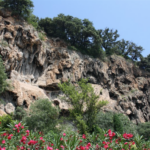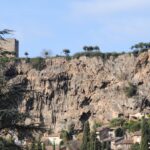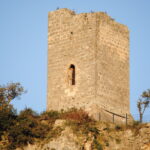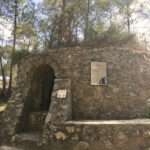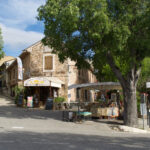The Rock of Cotignac
This majestic cliff called “Le Rocher” is part of Cotignac’s historical and emotional heritage. Of those who decided to leave the village, our forefathers used to say, “acquéu veira plus la Roco, é sera malérous” (this one will no longer see the rock, and he will be unhappy).
The cliff, about 80m high and 400m long, is the natural work of the river Cassole which was at the origin of this geological formation composed of limestone deposits accumulated over time. The formation process begins when mineral-rich water flows slowly over rocky or vegetal surfaces. As the water evaporates, the minerals in the water settle and crystallize, forming layers of tuff.
As the water evaporates, the minerals in the water settle and crystallize, forming layers of tufa.
These natural shelters served as refuge for the few families who had settled near the Saint Martin spring, to protect themselves from invasions.
Thanks to the hard work of our elders, the river was diverted and it was around the 8th century that the feudal castle was built today totally destroyed.

